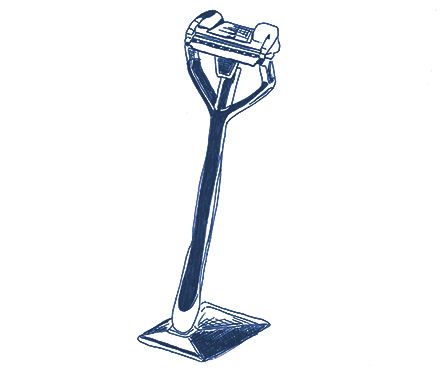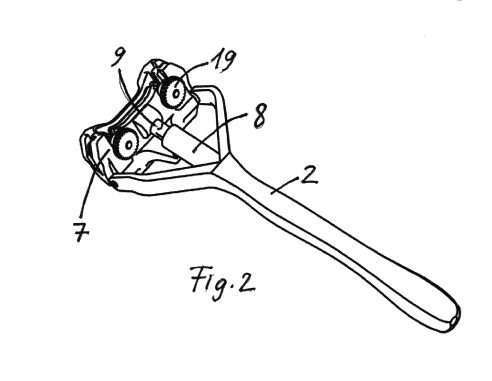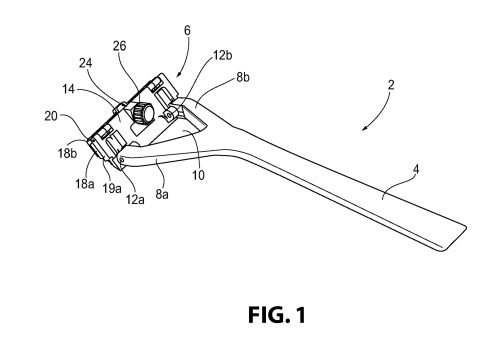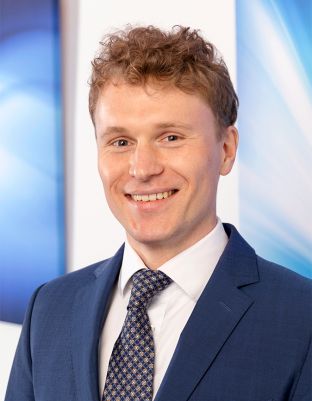
In season 10, episode 5, of the TV show "Die Höhle der Löwen" (German version of the US show Shark Tank and the UK show Dragon's Den), a young company from Munich presents a razor called SHAVENT: a swing-head razor with an interchangeable blade head.
A European patent application has been filed for SHAVENT. At the time of writing, the application is still in the examination phase. We see SHAVENT as a good example to shed light on prosecution before the European Patent Office (EPO). It shows how, on the part of the applicant, several objections of the examiner can be eliminated simultaneously in an elegant way in order to achieve patent protection successfully and cost-efficiently.
The product: SHAVENT. What is it about?
SHAVENT is a wet razor whose handpiece and shaving head are made of zinc and manufactured in a precision die-casting process. A chrome plating forms the finish. In addition to this finish, one advantage is the sustainable design of the wet razor, whose head can be disassembled to replace the standard blades inside. This sustainably protects the environment (less plastic) and the wallet (inexpensive standard blades).
The patent application (Ref.: 20206411.9)
As mentioned above, a European patent application (EP 3 825 079 A1, hereinafter referred to as EP'079) has been filed for SHAVENT, for which a European search report has been issued.
The search report
In the search report, the examiner assesses whether EP'079 meets the substantive and formal requirements of a patent application.
Info: Substantive requirements are all aspects that are related to the invention itself and the basic allowability. This includes, for example, novelty and inventive step. Formal requirements are all aspects which do not stand in the way of the allowability of the patent per se, but which must be fulfilled by the applicant as a prerequisite for the examination of the patent application.
One of these requirements that a patent application must meet, unity, is discussed in more detail below.
Lack of unity
Unity means that an application may formally contain only one invention.
Info: Art. 82 EPC defines unity of invention in such a way that a European patent application shall relate to one invention only or to a group of inventions so linked as to form a single general inventive concept.
The background of this regulation is comparatively trivial: An applicant should not be able to save fees by packing several inventions into one application. Since no patent office in the world wants to work without consideration, practically every patent system has such a provision. This is also the case in German Patent Law with the almost identical provision §34, paragraph 5, PatG.
In assessing unity, a fundamental distinction is made between non-unity a priori and non-unity a posteriori. The lack of unity a priori exists independently of the prior art; it is, so to speak, already apparent from the application to be assessed. In contrast, lack of unity a posteriori only arises from a comparison with the cited prior art, if the subject-matter of an independent claim proves to be known or not inventive, and thus the common idea linking several dependent claims ceases to exist.
If an objection relating to lack of unity of an application was not raised during the examination proceedings, it can no longer be raised later as a ground for opposition or nullity, since it has fulfilled its function of order at the conclusion of the examination proceedings.
Regarding EP'079, the examiner raises the objection in the search report that it is not unitary within the meaning of Art. 82 EPC.
The reason for this is the various embodiments of the razor defined in the dependent claims of EP'079. Thus, the examiner alleges that the following three different inventions would be present:
1) A plurality of razor blades interchangeably supported between the frame and the cover (cf. claims 1-9, 12, 14 and 17 of EP'079);
2) pivotable mounting of the shaving head (cf. claims 10, 11 and 13 of EP'079); and
3) special design of the handle (cf. claims 15 and 16 of EP'079).
The basis for this allegation is provided by Art. 82 EPC in that independent claim 1 to which the three allegedly different inventions 1), 2) and 3) relate is not novel and thus does not provide a basis for a single general (common) inventive concept of all three inventions.
Divisional applications
Based on this allegation, the examiner invites the applicant in the search report to limit the patent application to one of these three inventions and to pursue the other two inventions in separate patent applications.
From a formalistic point of view, this demand to remove non-unity a posteriori is justified according to the understanding of Art. 82 EPC. However, the applicant incurs high costs by filing corresponding divisional applications (Art. 76 EPC) with respective filing and search fees.
Info: Divisional applications can be used to obtain several patents directed to different aspects of an invention for which an original application exists. On the one hand, the objection of non-unity can thus be countered, and on the other hand, a new aspect of the invention, which has not previously been claimed and consequently not searched, can thus be filed for examination.
In view of the high costs of divisional applications, the applicant should therefore thoroughly assess whether the argumentation of the Search Division really convincingly substantiates lack of unity. Often another general (i.e. common) inventive idea can be found, with which the unity of invention can be shown argumentatively (i.e. without filing divisional application(s)).
General inventive idea
Claim 1 of EP'079 defines that "the at least one razor blade is insertable between the frame (7) and the cover by means of actuable, off-center fixing means (19)" (cf. Fig. 2 of EP'079, bottom left). In this regard, the examiner cites D1 (WO 2016/081795 A1; cf. Fig. 1 of D1, bottom right) and alleges that the razor screw 26 of D1 is also actuable and arranged off-center.
Info: Off-center can be understood in different ways, for example that the screw is positioned closer to the top edge (cf. Fig. 1 of D1, bottom right).


We agree with the examiner in their assessment, but also at the same time see the general and thereby common inventive idea of SHAVENT razor in the fixing means being "symmetrically" off-center (cf. paragraph [0009] in the description of EP'079).
Consequently, adding the seemingly simple term "symmetrical" to claim 1 could establish not only novelty but also unity.
Since claim 1 would be novel over D1 with such an amendment, all claims dependent on claim 1 have a common basis, which can be understood as a single general inventive idea. Thus, the requirement of unity could be achieved together with the requirement of novelty.
Based on the "symmetrically off-center fixing means", inventive step can also be argued in addition to novelty. This is because symmetry can provide better accessibility to problem areas, such as the transition between the upper lip and nose (cf. paragraphs [0011] and [0012] of EP'079). This advantage cannot be achieved by a razor as shown in Fig. 1 of D1.
Thus, such an amendment in claim 1 could solve all objections concerning unity, novelty and inventive step at the same time. The high costs for possible divisional applications can thus be avoided.
Conclusion
We have used the example of EP'079 to show how objections from examiners can be countered to successfully meet the requirements of the European Patent Convention (EPC).
In practice, it is shown that by eliminating one objection, another objection can often be eliminated, too. In the present example of EP'079 concerning SHAVENT, we have shown that by eliminating the objection concerning novelty over the closest prior art D1, unity can be restored and at the same time an effective delineation from the prior art can be achieved to argue inventive step. This also demonstrates an effective way to save the applicant the high costs incurred for divisional applications.
Author: Julian Graf
German and European Patent Attorney
Disclaimer: The above contribution reflects the personal opinion of the author. The assessments and statements made in the article do not constitute legal advice and are provided under exclusion of any liability. If you need an assessment of an individual case, please contact the author and/or the law firm KUHNEN & WACKER.


